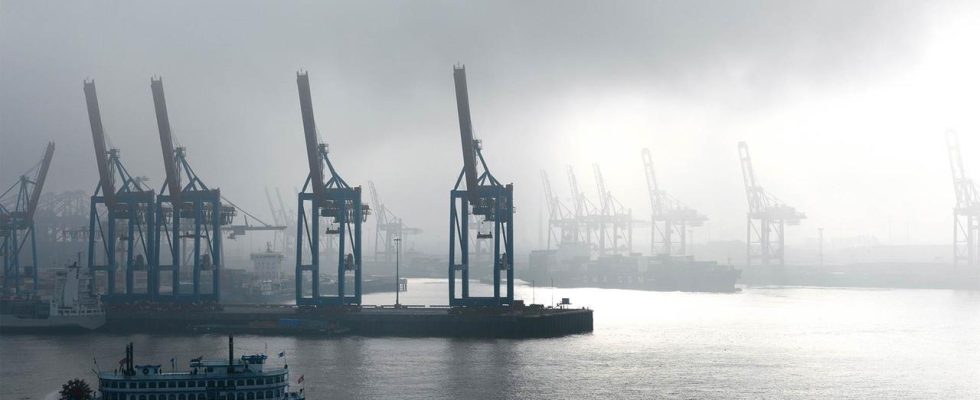The global crises have not left the port of Hamburg unscathed. Germany’s largest seaport suffered a significant setback in container throughput. China remains the largest trading partner.
The Port of Hamburg has had a difficult year in 2023. Container throughput in Germany’s largest seaport fell significantly by 6.9 percent to 7.7 million standard containers (TEU). For comparison: 8.3 million TEU were handled in 2022, the year before that it was even 8.7 million TEU.
A total of 114.3 million tons of sea freight passed over the quay edges, said the head of Port of Hamburg Marketing (HHM), Axel Mattern. That is 4.7 percent less than in 2022. Imports accounted for 65.6 million tons and exports 48.6 million tons.
Glimmer of hope of the year
However, the business association was able to see a glimmer of hope around the turn of the year in the figures for container throughput, which were given more attention in the industry: the decline in the first half of 2023 was still 11.7 percent and thus above the annual value. There was also a smaller decline in the first two months of 2024 than in 2023.
Mattern was therefore confident for the current year without making a forecast. “With the development of our throughput figures, we are on a par with the Northern European competitive environment and can hold our own well in comparison with other ports.”
Weak world trade, weak German economy
When looking for reasons for the decline in container throughput last year, HHM boss Mattern points to the “difficult geopolitical and economic situation” that all market participants are confronted with and the “decreasing momentum in world trade”.
Only on Monday, the World Trade Organization (WTO) declared that global trade in goods could develop even weaker this year than previously predicted. According to the business association, the declining development of the German economy and the subdued consumer climate will also have a negative impact in 2023.
Market share maintained
At least the Port of Hamburg was able to maintain its market share. This is because container throughput at its northern European rivals had fallen even further. Hamburg remains in third place among the so-called North Range ports – which include the ports on the North Sea coast of continental Europe that are relevant for container handling. Rotterdam and Antwerp occupy first and second place.
China remains largest trading partner
According to HHM, the Port of Hamburg’s largest trading partner is still China, including Hong Kong. However, container traffic here fell slightly compared to the previous year to just under 2.2 million TEU. On the other hand, there was an increase of eight percent to 653,000 TEU in container traffic with the USA, the second largest trading partner. Singapore, Poland and Sweden follow in third to fifth place. India moved up to eighth place.
According to HHM, the crisis in the Red Sea is causing delays in the port of Hamburg, but not disrupting operations. A few fewer ships arrived in January and then followed in February. The terminals showed sufficient flexibility to process these problems without any problems. There are no traffic bottlenecks. Situations like the blockade of the Suez Canal by the ship “Evergiven” in 2021 are currently a long way away.

